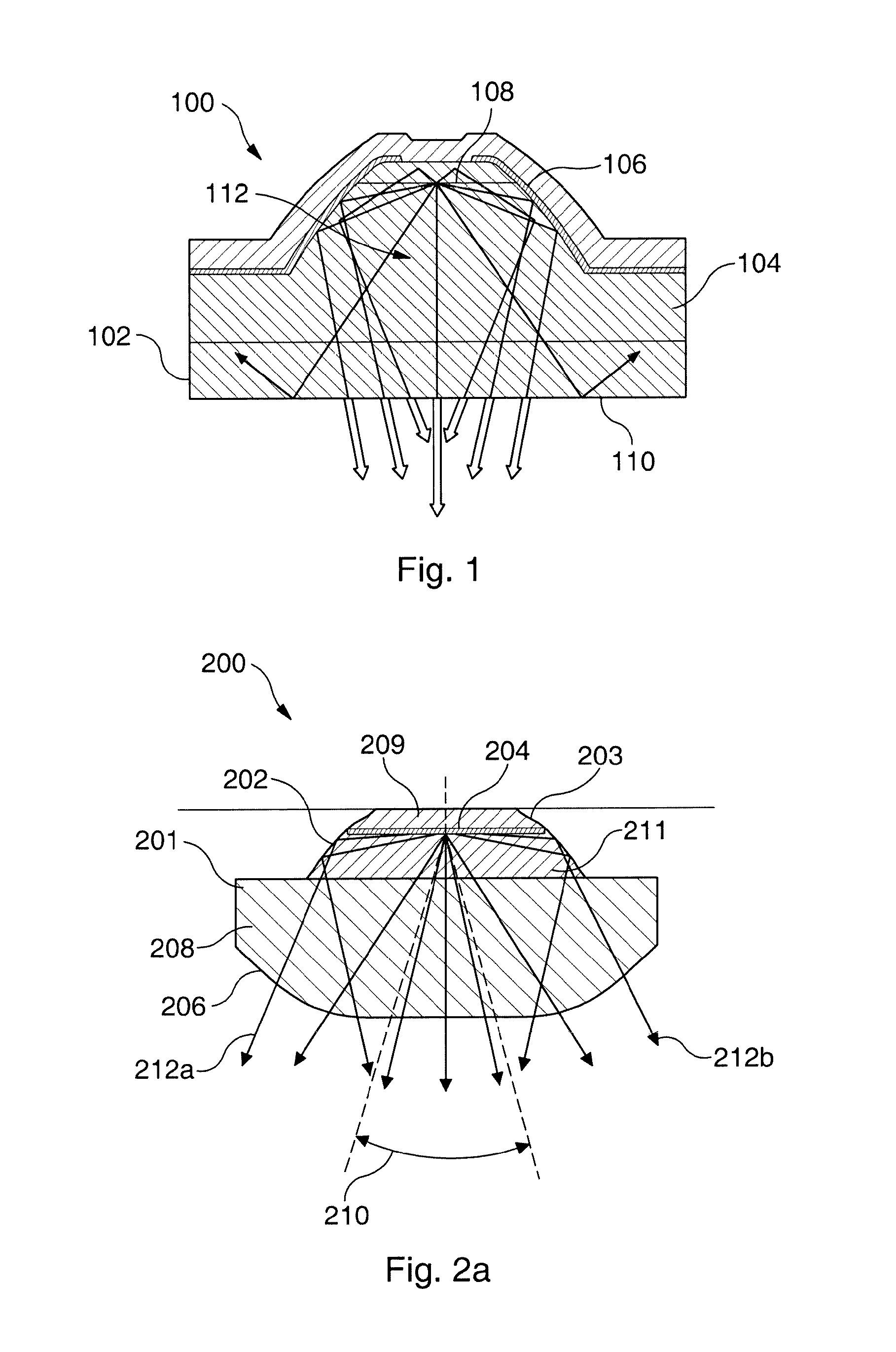Optical device
a technology of optical devices and optical components, applied in the direction of solid-state devices, semiconductor devices, radio-controlled devices, etc., can solve the problems of high absorption, and not eliminating the long path lengths of led chips, so as to achieve high optical efficiency, high electrical wall plug efficiency, and high efficiency
- Summary
- Abstract
- Description
- Claims
- Application Information
AI Technical Summary
Benefits of technology
Problems solved by technology
Method used
Image
Examples
Embodiment Construction
[0081]It is noted that the following description refers predominantly to LED devices but the invention should not be limited to such. The invention applies equally to light receiving devices, such as photodiodes. Further, in this specification the term “light” will be used in the sense that it is used in optical systems to mean not just visible light, but also electromagnetic radiation having a wavelength outside that of the visible range.
[0082]For micro-LED structures having an active layer enclosed in a mesa structure, the applicant has identified a relationship between the geometrical dimensions of the mesa, the total amount of light generated and the amount of light extracted. In the case of a micro-LED, the directionality (beam profile), is directly linked to the material properties and the difference in refractive indices between the material of the LED and the surrounding medium. The applicant has therefore established that the main areas to improve in a micro-LED design are ...
PUM
 Login to View More
Login to View More Abstract
Description
Claims
Application Information
 Login to View More
Login to View More - R&D
- Intellectual Property
- Life Sciences
- Materials
- Tech Scout
- Unparalleled Data Quality
- Higher Quality Content
- 60% Fewer Hallucinations
Browse by: Latest US Patents, China's latest patents, Technical Efficacy Thesaurus, Application Domain, Technology Topic, Popular Technical Reports.
© 2025 PatSnap. All rights reserved.Legal|Privacy policy|Modern Slavery Act Transparency Statement|Sitemap|About US| Contact US: help@patsnap.com



